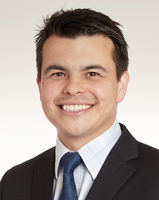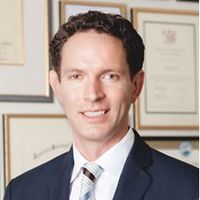Central Auckland > Public Hospital Services > Starship Child Health >
Starship Paediatric Plastic and Reconstructive Surgery
Public Service, Plastic Surgery
Description
- Reconstructive surgery: is performed on parts of the body that are abnormal or have been affected by a birth defect, accident or disease. This includes cleft lip and palate repair, scar revision or reconstruction (including skin grafts) following burns. Surgery is usually performed to improve function, but may also be performed to bring the appearance of a part of the body as close as possible to normal.
- Aesthetic or cosmetic surgery: improves appearance or body image by reshaping features of the face or body e.g. breast enlargement, face lift, liposuction.
Consultants
-

Mr Jonathan Heather
Plastic and Reconstructive Surgeon
-

Mr Jonathan Wheeler
Plastic and Reconstructive Surgeon, Clinical Lead Paediatric Plastic Surgery
Referral Expectations
Procedures / Treatments
A cleft lip occurs when there is a failure of normal structures to join together during formation of the lip, resulting in a gap in the lip. A cleft lip often occurs together with a cleft palate which is the result of the failure of the two sides of the roof of the mouth to join together. A cleft palate can affect a child’s ability to feed, rate of weight gain, middle ear function, speech and facial growth. Cleft lip and palate are usually repaired by surgery at about 9 months of age. In some cases, the lip is strapped with tape for some time before surgery to help prepare for the procedure. Further surgery is usually carried out at about 7 or 8 years of age. During this time, the child’s hearing and speech development will be monitored. Sometimes speech therapy and/or grommets (drainage tubes inserted into the ear drums) may be necessary.
A cleft lip occurs when there is a failure of normal structures to join together during formation of the lip, resulting in a gap in the lip. A cleft lip often occurs together with a cleft palate which is the result of the failure of the two sides of the roof of the mouth to join together. A cleft palate can affect a child’s ability to feed, rate of weight gain, middle ear function, speech and facial growth. Cleft lip and palate are usually repaired by surgery at about 9 months of age. In some cases, the lip is strapped with tape for some time before surgery to help prepare for the procedure. Further surgery is usually carried out at about 7 or 8 years of age. During this time, the child’s hearing and speech development will be monitored. Sometimes speech therapy and/or grommets (drainage tubes inserted into the ear drums) may be necessary.
This occurs when the bones of an infant’s skull fuse together before the brain has finished expanding. This can cause an abnormally shaped head and unusual facial appearance. Surgery is performed to release the fused skull bones and to reshape the head. Patients referred to Starship are seen at a combined clinic with Neurosurgery and Plastic/Craniofacial Surgery.
This occurs when the bones of an infant’s skull fuse together before the brain has finished expanding. This can cause an abnormally shaped head and unusual facial appearance. Surgery is performed to release the fused skull bones and to reshape the head. Patients referred to Starship are seen at a combined clinic with Neurosurgery and Plastic/Craniofacial Surgery.
Patients referred to Starship are seen at a combined clinic with Neurosurgery and Plastic/Craniofacial Surgery.
Also known as port wine stains or strawberry haemangiomas, these are non-cancerous, vascular skin lesions. These usually appear in the first month after birth and can grow very quickly for about 8 months. Haemangiomas generally start to fade and become smaller after 2-10 years of age but usually do not disappear completely. Treatment is not usually recommended unless the haemangioma is causing problems such as bleeding, feeding or breathing difficulties or impairing vision. Recommended treatments depend on the type and location of the haemangioma and include medication, laser treatment and surgery. If surgery is required, it usually does not require an overnight stay in hospital.
Also known as port wine stains or strawberry haemangiomas, these are non-cancerous, vascular skin lesions. These usually appear in the first month after birth and can grow very quickly for about 8 months. Haemangiomas generally start to fade and become smaller after 2-10 years of age but usually do not disappear completely. Treatment is not usually recommended unless the haemangioma is causing problems such as bleeding, feeding or breathing difficulties or impairing vision. Recommended treatments depend on the type and location of the haemangioma and include medication, laser treatment and surgery. If surgery is required, it usually does not require an overnight stay in hospital.
A naevus is a common skin growth composed of special pigment-producing cells. Naevi can vary in size, with small naevi requiring only simple surgery for removal, while the removal of larger naevi may require more than one operation and may involve skin grafts.
A naevus is a common skin growth composed of special pigment-producing cells. Naevi can vary in size, with small naevi requiring only simple surgery for removal, while the removal of larger naevi may require more than one operation and may involve skin grafts.
This clinic is run with Paediatric Orthopaedics and with the support of the Hand Surgeons from Middlemore. Types of conditions seen include syndactyly (joined fingers) and other types of hand conditions that occur from birth. There are patients who have had a trauma and need specialist follow-up through this clinic.
This clinic is run with Paediatric Orthopaedics and with the support of the Hand Surgeons from Middlemore. Types of conditions seen include syndactyly (joined fingers) and other types of hand conditions that occur from birth. There are patients who have had a trauma and need specialist follow-up through this clinic.
Scar appearance can be improved by various methods including a surgical procedure known as scar revision. This usually involves cutting out the old scar, closing the wound with stitches and, in some cases, moving the scar so that it is hidden by natural features of the body. Scar revision is usually performed under local anaesthesia (the area around the scar is numbed by injecting a local anaesthetic). Sometimes you may also be given steroid injections at the time of surgery. Immediately following the procedure, you will need to remain at the clinic for about an hour, during which you will be encouraged to walk around. You may or may not have a dressing put on the wound and it is important to keep the area dry for 24 hours. Stitches may be removed in 1-2 weeks. You may need to take a few days off work after the surgery.
Scar appearance can be improved by various methods including a surgical procedure known as scar revision. This usually involves cutting out the old scar, closing the wound with stitches and, in some cases, moving the scar so that it is hidden by natural features of the body. Scar revision is usually performed under local anaesthesia (the area around the scar is numbed by injecting a local anaesthetic). Sometimes you may also be given steroid injections at the time of surgery. Immediately following the procedure, you will need to remain at the clinic for about an hour, during which you will be encouraged to walk around. You may or may not have a dressing put on the wound and it is important to keep the area dry for 24 hours. Stitches may be removed in 1-2 weeks. You may need to take a few days off work after the surgery.
If the scar to be revised or skin lesion being removed is particularly large, a skin graft may be performed. This involves transferring skin from another, healthy part of the body (donor site) to the injured site (recipient site). While skin grafting can improve the function of a damaged area, some scarring will be left at both the donor and recipient sites. Skin grafting is likely to be performed under general anaesthesia (you will be asleep during the procedure) in a hospital. The wound may take weeks or months to heal and you may need to wear a support bandage for a similar period.
If the scar to be revised or skin lesion being removed is particularly large, a skin graft may be performed. This involves transferring skin from another, healthy part of the body (donor site) to the injured site (recipient site). While skin grafting can improve the function of a damaged area, some scarring will be left at both the donor and recipient sites. Skin grafting is likely to be performed under general anaesthesia (you will be asleep during the procedure) in a hospital. The wound may take weeks or months to heal and you may need to wear a support bandage for a similar period.
The appearance of ears that are misshaped or protruding (‘bat ears’) can be improved surgically. This type of operation is often carried out in children. Cuts (incisions) are made behind the ears through which the cartilage in the ear can be reshaped or removed. The surgery lasts 1-2 hours and can be performed under local anaesthetic (the area treated is numb but you are awake), allowing you to go home the same day. For children, the procedure would be performed under general anaesthetic (they sleep through it) and they will remain in hospital overnight. You will need to wear head bandages for about 1 week and will probably be able to return to normal daily routines after that.
The appearance of ears that are misshaped or protruding (‘bat ears’) can be improved surgically. This type of operation is often carried out in children. Cuts (incisions) are made behind the ears through which the cartilage in the ear can be reshaped or removed. The surgery lasts 1-2 hours and can be performed under local anaesthetic (the area treated is numb but you are awake), allowing you to go home the same day. For children, the procedure would be performed under general anaesthetic (they sleep through it) and they will remain in hospital overnight. You will need to wear head bandages for about 1 week and will probably be able to return to normal daily routines after that.
Contact Details
Starship Child Health, Central Auckland
Central Auckland
General Enquiries:
(09) 3074949
Outpatient Appointments:
(09) 638 0400 or 0800 PATIENT 0800 728 436 or scheduling@adhb.govt.nz
Emergency Department:
Open 24 hours / 7 days, Phone (09) 307 4902
GP/External Specialist Help Desk:
(09) 3072800
2 Park Road
Grafton
Auckland 1023
Street Address
2 Park Road
Grafton
Auckland 1023
Postal Address
Starship Child Health
Private Bag 92 024
Auckland Mail Centre
Auckland 1142
New Zealand
Was this page helpful?
This page was last updated at 12:06PM on April 1, 2025. This information is reviewed and edited by Starship Paediatric Plastic and Reconstructive Surgery.
